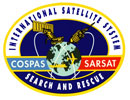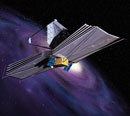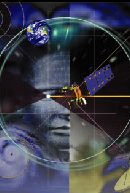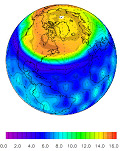Experiences

Operations Support NOAA SARSAT 2005 – Present
Terranet provides operational support of the United States Mission Control Center (USMCC) computer control facility for the Search and Rescue Satellite Aided Tracking (SARSAT) program. The USMCC is a 24/7 data center which serves as an information hub for alert data (i.e. rescue signals). Additionally, our personnel assisted the USMCC in managing the Nation Beacon Registration Database.

Managment of IT infrastructure for the Space Earth Science Data Analysis (SESDA) project 2003 – Present
Terranet provides help desk and network support services for NASA’s SESDA project. Our personnel support a heterogeneous environment of 127 Unix/Linux, Windows and Mac workstations, desktops and servers. ORTS and IRM software are used to manage and measure the Help Desk support. As part of our end to end support, we provide network configuration and management of CISCO and 3COM routers, firewalls and switches and use MTRG and Nagios to measure and manage the network.

IT support of the James Webb Space Telescope (JWST) project 2004 – Present
Terranet provides configuration and management support for the JWST project. Our personnel provide support for the DOORS, CITRIX, and MS Project software and support of Web and Tele-Conferencing.

Systems Engineering Service and Advance Concepts Branch Code 592 2004 – Present
Terranet assisted in the first implementation of a wireless computer network at GSFC using the IEEE 8201.11x standard. We provide configuration and management of the wireless connectivity which currently has over 300 wireless users in 6 buildings at GSFC. The entire network is centrally managed using a FreeRadius an Open Source Radius server which was built by Terranet personnel and uses the Wireless Application Protocol (WAP) for secure connectivity.
Terranet provides systems engineering and management of Windows platforms for Visual Systems Designed Environment (VSDE). VSDE is a GSFC custom development web based portal that includes a knowledge repository and collaborative environment to serve science and engineering teams in product development. It is a one stop shop for product design, providing users real-time access to product development data, engineering and management tools, and relevant design specifications and resources through the Internet. Terranet uses a GSFC custom developed Help Desk to support the 3000 VSDE users and develpers.

Mission Engineer System Analysis Division code 590 2005 – present
Terranet assisted the Division in migrating its active directory to become part of the GSFC domain.
Terranet provides help desk support services for over 200 users in a heterogeneous environment of Macs, Linux and Windows. We support the Concurrent Version System (CVS), Office 2003, MatLab, Patch Link and Veritas NetBackup software. We maintain 10 Linux and 5 Windows servers which perform file, license, CVS and print services.

Data Processing facility for the NASA UARS Project 1988 – 2000
Terranet personnel assisted in the procuring and building of the Central Data Handling Facility (CDHF) for NASA’s Upper Atmospheric Research Satellite (UARS) program. Initially, the CDHF started in 1988 with a VAX 8600 computer, 500 megabytes of storage, 4 reel-to-reel tape drives and two routers. The facility has been upgraded several times and now includes four Digital 7200 computers with 1.4 terabytes of storage, an optical disk jukebox, a tape silo, and four routers. The image to the left shows the CDHF computer facility. The phase I and II equipment procurement costs were $15 million. With Terranet’s support this facility continues to store and process data.

Built a Mission Planning Facility for Principal Scientists to perform Satellite Instrument Planning 1991-2000
This computer facility as partly shown in the image to the left was built with the assistance of Terranet personnel. Started in 1991 with a Micro-VAX 4000 and two DEC Station 3000 computers with 50 megabytes for storage, one router and 10 dial-up lines. The facility was upgraded in 1997 to an Alpha Station 255 computer with 20 gigabytes of storage and two routers. The equipment procurement costs including the upgrades is $500K. It continues to process data and provide NASA scientist a platform to perform research when at GSFC.

Data Visualization 1989 – Present
Terranet personnel started using IDL from its first release version 1.0 in 1989 and continues to use it today to make various images and graphs to support the science goals of NASA. Terranet has used IDL with Fortran and C/C++ languages to provide an integrated solution and software products for its user community. Our ability to perform scientific data analysis and reduction along with our programming capability allow us to read various data formats, perform fits along with displaying images in various projections including movie loops.
The image to the left was made from the UARS MLS instrument data using the IDL software on a Digital Equipment Corporation (DEC) Alpha computer running OpenVMS.

Development of algorithms for Spacecraft Orbital Dynamics 1988 – Present
Terranet has developed algorithms to predict and retrieve satellite orbit and attitude information. It has used modeling technique such as thermal snap perturbations and Kalman filters to provide improved analysis of measurement. The image to the left shows the viewing track of the UARS satellite Microwave Limb Sounder instrument on a spherical Earth projection. The image is made with the use of Fortran and IDL.

Satellite Communication and Remote Sensing (Bangladesh and Mongolia) 1987 – 1995
Terranet personnel supported the setup of a satellite data receiving and processing station in Dhaka, Bangleshesh for the Office of USAID. As part of the setup a satellite antenna like the one shown in to the left was installed in Dhaka. The antenna and computer system reads and processes GOES, GMS, Metosat, TIROS, and POES satellite data in realtime to provide weather forecasting information. As part the Global One Kilometer Data Collection program in Mongolia, Terranet provided support for a PC based satellite receiving station and processing center.

Network Configuration, Implementation and Training 1993 – Present
Terranet has Cisco Certified Network Professional (CCNP) and Cisco Certified Security 1 (CCS1) professional personnel having 10 years of experience providing configuration, integration and training on computer networks. Our implementation of a Voice of IP (VOIP) solution saved Skyline Computer Corp. $100k annually in telecommunication cost. Our personnel have provided security training solutions for EDS and VISA. We are knowledgeable about the Cisco product line of routers, switches, firewalls and other network equipment. We have working knowledge of network protocols such as TCP/IP, SNA, DECnet, X.25, Frame-Relay, ATM, RIP, IGRP, OSPF, SNMP, IPsec and WCCP.
The image to the left shows a rack of two Cisco routers, Cisco Pix firewall and six T1 data lines. Three of the T1 lines are ganged to using Cisco Express Forwarding to provide at total bandwidth of 4.5megbits to the Internet. The other T1 lines are used for point-to-point data transfers. Terranet personnel assisted in the design, procurement and installation of the SSAI network that supports 150 personnel at the Seabrook offices.

Help Desk Support NASA ODIN 1988 – 2000
Terranet managed 10 personnel on computer helpdesk support contracts. These personnel provide both users level and backoffice support. The user level support included computer software image management, software patches and upgrades, and troubleshooting individuals’ computers. The backoffice support included routers, fileservers, printers, and webservers. Terranet helped manage personnel for the Open Desktop Initiative for NASA (ODIN). This included 7 personnel and a budget of $300,000.00.